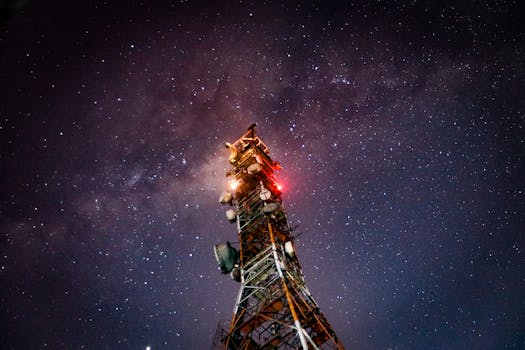
The Rise of Mega-Constellations: Latest Updates in Satellite Telecommunications
The Focus Keyword Mega-Constellations has been a buzzword in the satellite telecommunications industry, with several companies launching their own constellations of satellites in recent years. These mega-constellations are designed to provide global internet coverage, bridging the digital divide and transforming the way we communicate. In this article, we will explore the latest updates in satellite telecommunications and the impact of mega-constellations on the industry.
Mega-constellations are a network of satellites that work together to provide global coverage, offering a range of services including internet connectivity, navigation, and remote sensing. The development of mega-constellations has been made possible by advances in space technology, including the development of smaller, more affordable satellites and the use of reusable launch vehicles. Companies such as SpaceX, Amazon, and OneWeb are leading the charge, with plans to launch thousands of satellites into orbit in the coming years.
Benefits of Mega-Constellations
The benefits of mega-constellations are numerous, with the potential to provide global internet coverage, improve communication in remote and underserved areas, and offer a range of new services and applications. Mega-constellations can also provide a backup to traditional telecommunications infrastructure, ensuring that communities stay connected even in the event of a disaster or outage. Additionally, the development of mega-constellations is driving innovation in the space industry, with new technologies and business models emerging as a result.
Challenges and Concerns
Despite the many benefits of mega-constellations, there are also challenges and concerns that must be addressed. One of the main concerns is the risk of space debris, with the launch of thousands of new satellites increasing the risk of collisions and the accumulation of debris in Earth’s orbit. There are also concerns about the impact of mega-constellations on the environment, with the potential for satellites to interfere with astronomical observations and the natural environment. Furthermore, the development of mega-constellations raises questions about regulation and governance, with the need for clear rules and guidelines to ensure that the industry develops in a sustainable and responsible manner.
Latest Updates and Developments
There have been several recent updates and developments in the field of mega-constellations, with companies such as SpaceX and Amazon making significant progress in the launch and deployment of their satellite constellations. SpaceX has launched several batches of its Starlink satellites, with plans to provide global internet coverage by the end of 2023. Amazon has also launched its Kuiper Systems constellation, with plans to provide fast and affordable internet connectivity to communities around the world. OneWeb has also made significant progress, with the launch of its first batch of satellites in 2020 and plans to provide global coverage by the end of 2025.




